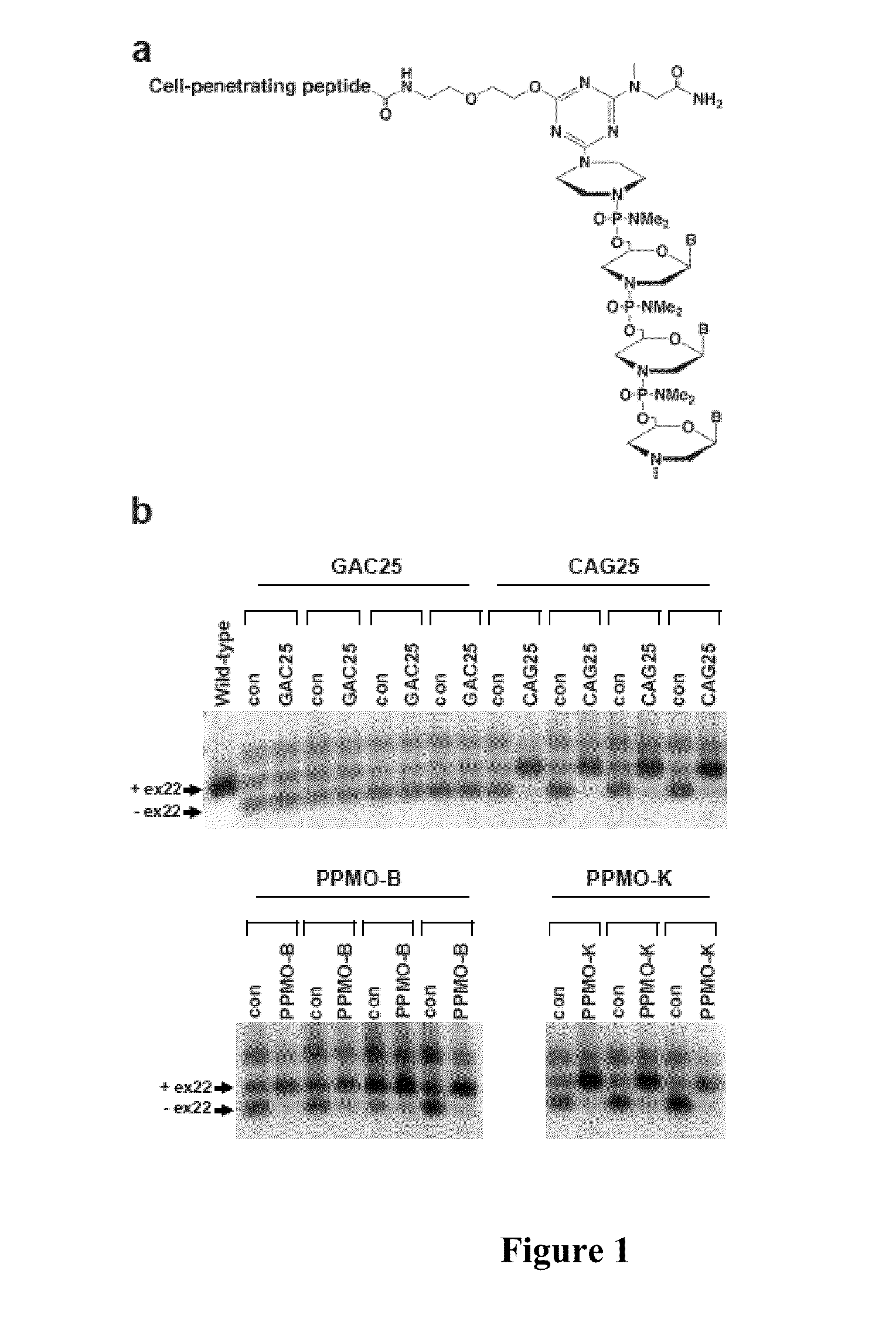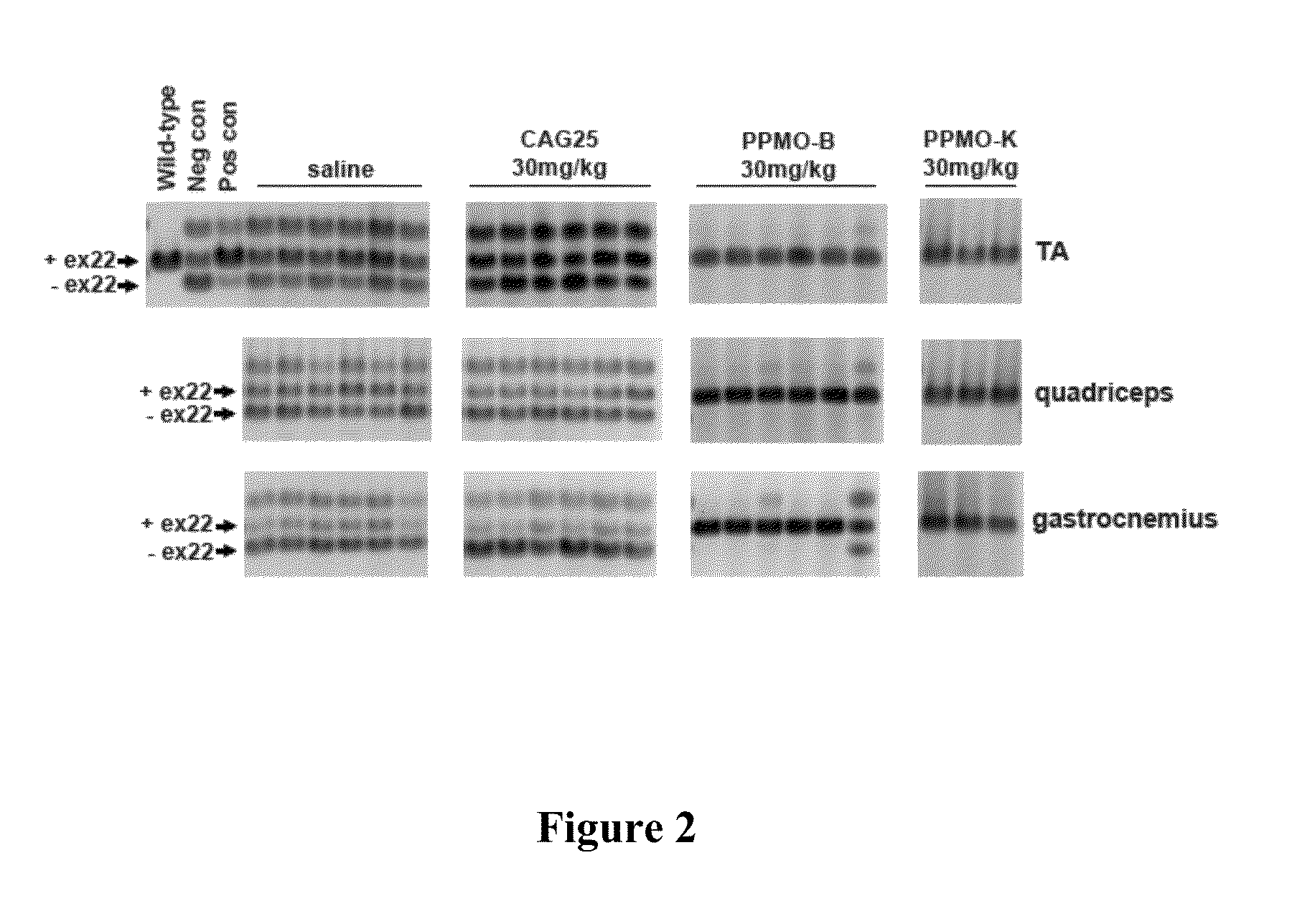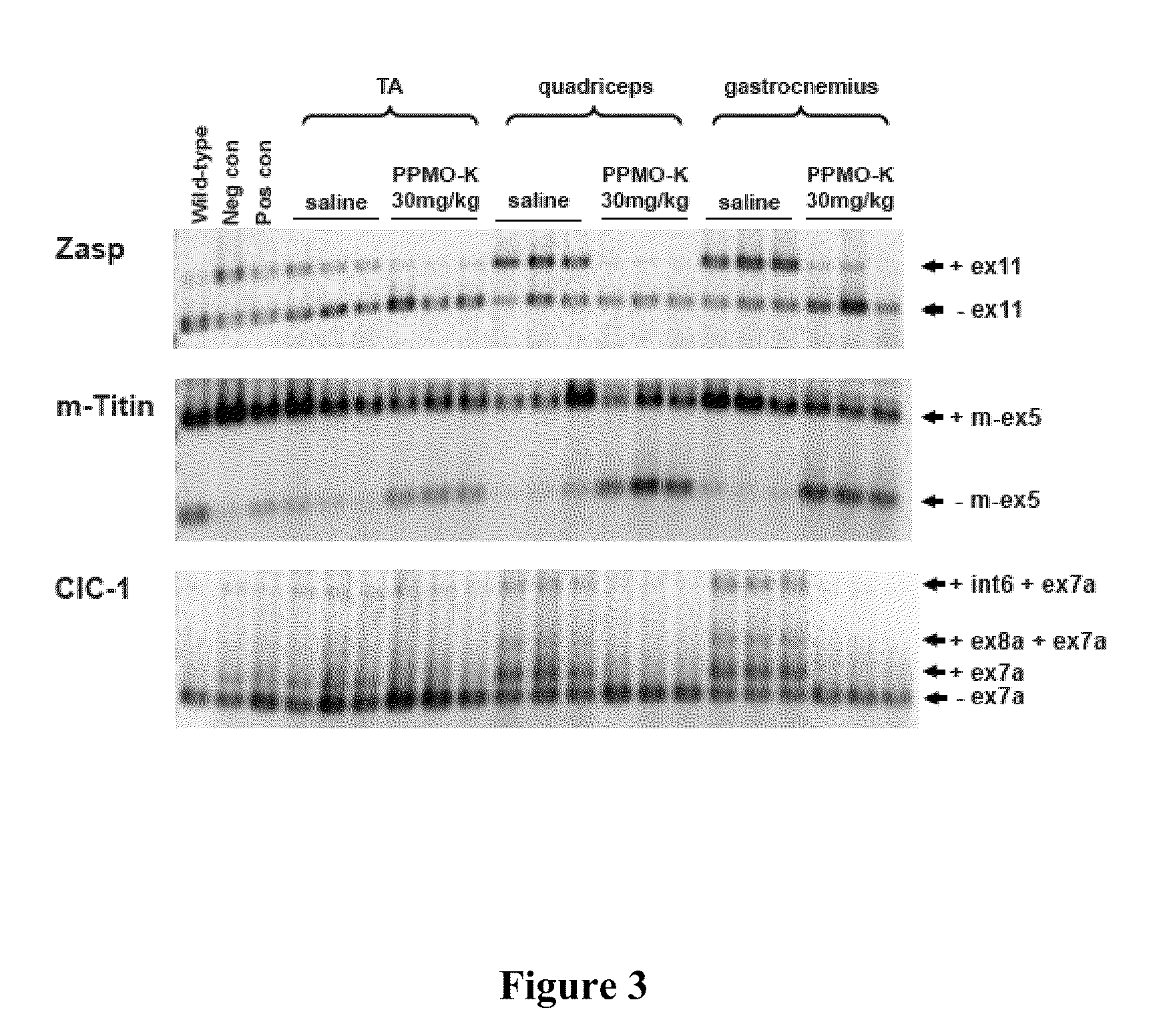Peptide-linked morpholino antisense oligonucleotides for treatment of myotonic dystrophy
- Summary
- Abstract
- Description
- Claims
- Application Information
AI Technical Summary
Benefits of technology
Problems solved by technology
Method used
Image
Examples
example 1
Intramuscular Injection of Two Different PPMO Conjugates into Tibialis Anterior Corrects aberrant RNA Splicing
[0100]Large expansions of CUG trinucleotide sequences provide the basis for a toxic RNA gain-of-function that leads to detrimental changes in RNA metabolism. Such a CUG repeat element normally resides in the 3′ untranslated region of the protein kinase DMPK, but when expanded it is the genetic lesion of myotonic dystrophy type I (DM1), a hereditary neuromuscular disease. The pathogenic DMPK transcript containing the CUG expansion is retained in ribonuclear foci as part of a complex with RNA binding proteins such as muscleblind-like 1 (MBNL1), resulting in aberrant splicing of numerous RNA transcripts and physiological abnormalities including myotonia.
[0101]In this example, condensation synthesis reactions were conducted to generate PPMO conjugates containing a 25 mer CAG sequence-based morpholino (Wheeler et al., 2009, Science 325:336-339), CAG25, and a cell-penetrating pept...
example 2
Repeated IV Injections of PPMO-B and PPMO-K Effectively Ameliorate Spliceopathy in vivo
[0113]Having confirmed that modification of CAG25 with peptide B or K did not abrogate its bioactivity, this example evaluates whether PPMO-B and PPMO-K could modulate the effects of toxic RNA in HSALR mice using an IV dosing regimen.
Materials and Methods
[0114]Systemic Delivery Studies in HSALR
[0115]CAG25, PPMO-B, and PPMO-K were dissolved in saline and administered to male and female HSALR homozygous mice at a dose of 30 mg / kg bodyweight by tail vein IV injection once a week for six weeks. Blood was collected by retro-orbital bleed 24 h following the last dose. Approximately one week following the final dose, mice were evaluated for the presence of myotonia as described in Electromyography procedures. Mice were then killed; muscle sections were frozen in liquid N2 for RNA analyses or embedded in OCT medium and frozen in cooled isopentane for immunofluorescence and FISH analyses.
[0116]RT-PCR Anal...
example 3
PPMO-K Disrupts CUG Nuclear Inclusion Complexes in Skeletal Muscle and Results in a Redistribution of MBNL1 Protein
[0122]In order to determine the fate of ribonuclear foci in mice treated with PPMO-K, this example demonstrates fluorescence in situ hybridization (FISH) to detect CUG ribonuclear inclusions in muscle.
Materials and Methods
[0123]Frozen sections of quadriceps muscle 6 μm thick were processed to detect localization of MBNL1 protein via immunofluorescence as described (Lin et al., 2006, Hum Mol Genet 15:2087-2097) with the following modifications: the polyclonal antibody A2764 was used at a concentration of 1:5000 followed by incubation with Alex-568-labeled goat-anti-rabbit polyclonal secondary antibody at a concentration of 1:500. Samples were imaged using a LSM510 META laser scanning confocal microscope configured for imaging DAPI and Alexa Fluor-568 sequentially. Examination was conducted using a 100x / NA1.45 Plan-Fluar oil immersion objective with 4x zoom.
Results
[0124]I...
PUM
| Property | Measurement | Unit |
|---|---|---|
| Time | aaaaa | aaaaa |
| Carrier mobility | aaaaa | aaaaa |
Abstract
Description
Claims
Application Information
 Login to View More
Login to View More - R&D
- Intellectual Property
- Life Sciences
- Materials
- Tech Scout
- Unparalleled Data Quality
- Higher Quality Content
- 60% Fewer Hallucinations
Browse by: Latest US Patents, China's latest patents, Technical Efficacy Thesaurus, Application Domain, Technology Topic, Popular Technical Reports.
© 2025 PatSnap. All rights reserved.Legal|Privacy policy|Modern Slavery Act Transparency Statement|Sitemap|About US| Contact US: help@patsnap.com



